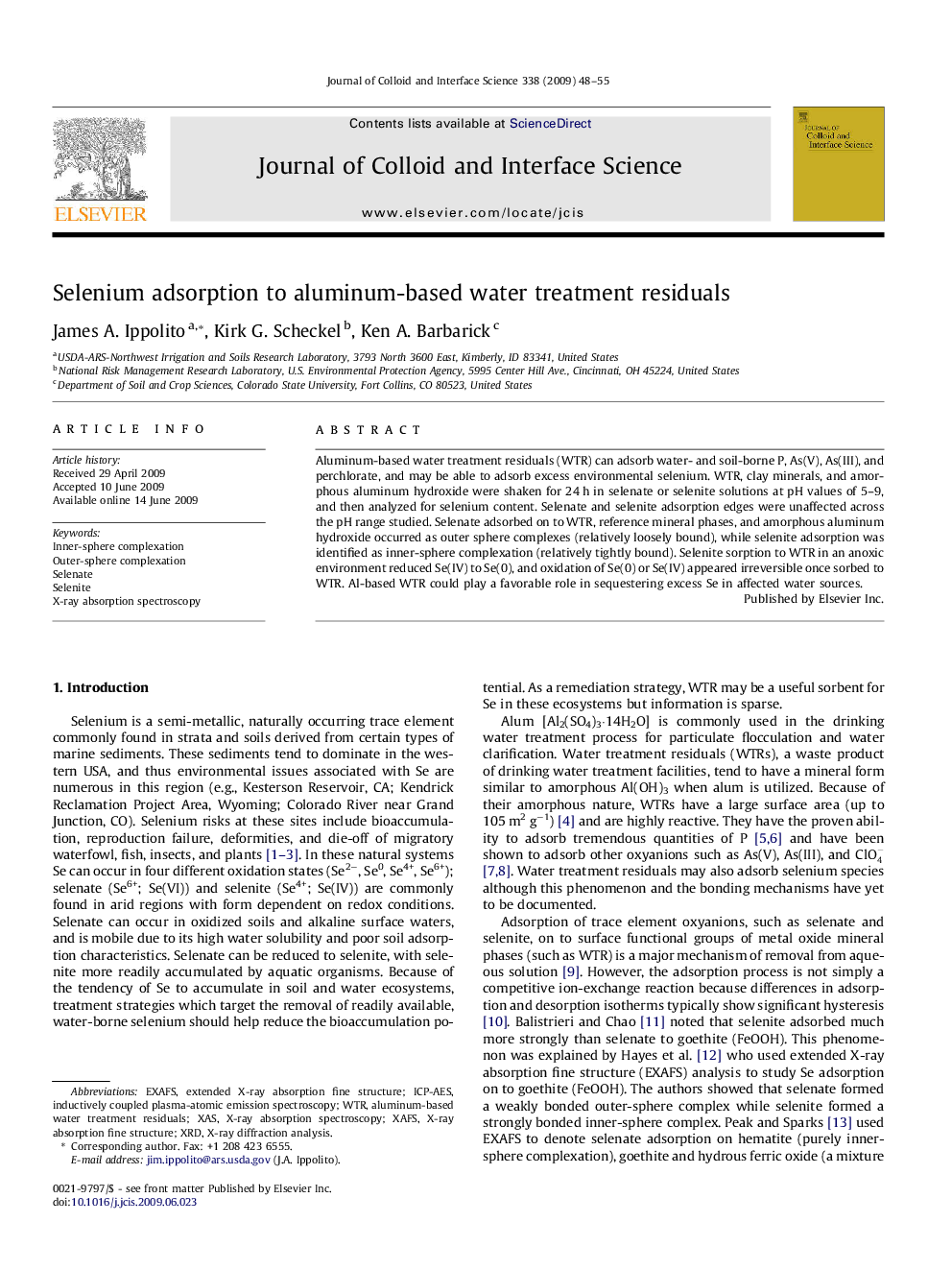| Article ID | Journal | Published Year | Pages | File Type |
|---|---|---|---|---|
| 610053 | Journal of Colloid and Interface Science | 2009 | 8 Pages |
Aluminum-based water treatment residuals (WTR) can adsorb water- and soil-borne P, As(V), As(III), and perchlorate, and may be able to adsorb excess environmental selenium. WTR, clay minerals, and amorphous aluminum hydroxide were shaken for 24 h in selenate or selenite solutions at pH values of 5–9, and then analyzed for selenium content. Selenate and selenite adsorption edges were unaffected across the pH range studied. Selenate adsorbed on to WTR, reference mineral phases, and amorphous aluminum hydroxide occurred as outer sphere complexes (relatively loosely bound), while selenite adsorption was identified as inner-sphere complexation (relatively tightly bound). Selenite sorption to WTR in an anoxic environment reduced Se(IV) to Se(0), and oxidation of Se(0) or Se(IV) appeared irreversible once sorbed to WTR. Al-based WTR could play a favorable role in sequestering excess Se in affected water sources.
Graphical abstractWater treatment residuals normalized absorption of (A) selenite K-edge XAS spectra as a function of anoxic Se(IV), anoxic or oxic Se(IV) adsorption followed by 4 weeks of air purging and (B) Fourier-transformed actual (solid line) versus fitted (dotted line) data.Figure optionsDownload full-size imageDownload high-quality image (108 K)Download as PowerPoint slide
